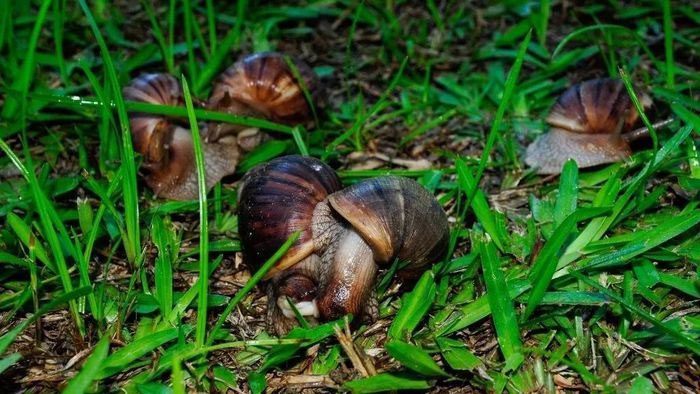Last week, Florida state officials announced that they have successfully removed a “special invader” from the state: the giant African land snail, a mollusk that can damage homes and cause meningitis in humans.
The giant African land snail (Lissachatina fulica) has previously invaded Florida once before. This marks the second time they have been “kicked out” of the state. This time, the effort to eradicate the giant snail cost $24 million and took 10 years of work.

The giant African land snail can grow up to 20 cm and damage homes.
These giant African snails can reach lengths of up to 20.3 cm, and when they do not consume enough calcium from the soil, they begin to gnaw on the plaster of houses. These snails pose a threat not only to homes but also to Florida’s agriculture, as they frequently feed on fruits and vegetables. After they are eliminated, they leave behind a trail of foul-smelling and persistent feces.
Some people claim that these giant snails can cause meningitis in humans and pets, but technically, this is true for all snail species.
Snails can become infected with a parasite called Angiostrongylus cantonensis from rat feces if ingested. If animals or humans consume the snails, they may contract the parasite, which can affect the meninges or spinal cord. Fortunately, this condition can be treated with antibiotics.
The snails first arrived in southern Florida in 1966 when a child brought them back from Hawaii. The child’s grandmother reportedly released the snails into the backyard, and shortly after, three snails multiplied and soon grew into thousands.
The U.S. began efforts to eradicate these giant snails in 1975, but in 2011, a new wave of these snails suddenly increased. A recent state investigation revealed that in 2010, a religious cult secretly imported dozens of snails from Nigeria for use in healing rituals. However, these snails can also be unintentionally imported via planes or cargo ships.
Over the past 10 years, researchers from the U.S. Department of Agriculture (USDA) and the state of Florida have studied the biological characteristics of the snail species to develop strategies for their eradication. Since the beginning of the eradication efforts, the research team has collected and destroyed approximately 168,000 snails.





















































